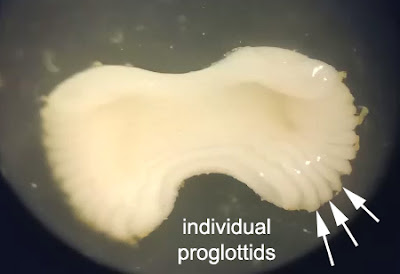This week's case is an interesting challenge! It was donated by Drs. David Sullivan and Ted Nash. The patient is a young girl from Ethiopia with intermittent GI distress. Her parents said that she had passed several ovoid objects per rectum. One of these objects was submitted for histologic sectioning and revealed the following.
Wednesday, June 19, 2024
Case of the Week 750
Tuesday, June 18, 2024
Answer to Case 750
Answer to the Parasite Case of the Week 750: Bertiella sp. proglottids and egg.
Kudos to everyone who got this right! As noted by Idzi, "At first I thought this would be plant material, but the egg is quite typical for Bertiella sp. showing the typical pyriform apparatus inside. Secondly, in the third histology picture I think I see calcareous corpuscles, typical for and consistent with a cestode structure, together with an eosinophilic acellular tegument. So I'll follow Florida Fan with the diagnosis of Bertiella sp. infection.
Here is the characteristic egg with the pyriform apparatus inside:
Our previous case (565) shows this in greater detail, along with the short and wide proglottids (with a disturbing resemblance to bow tie pasta).
When looking at the proglottids from cases 565, one can see how sectioning may reveal the 'interesting' histopathologic appearance that we see in this case.
Previous case:










